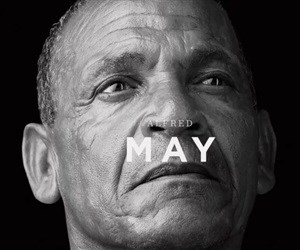The exhibition, 'My Naam is Februarie: Identities Rooted in Slavery' has opened to the public at the Iziko Slave Lodge in Cape Town. The exhibition is part of the Slave Calendar, which was produced for Iziko Museums of South Africa by Geometry Global. Through the calendar, Iziko and Geometry, wanted to highlight an important aspect of the Cape's history, one that remains a mystery to many.
Cape Town has many people with calendar-based surnames with September, October and November being the most common. Not many know why this is so. The exhibition and the Slave Calendar seek to answer this mystifying question in a beautifully visual and profound way.
“The purpose of the exhibition is not to showcase ‘The History of Slavery’ in South Africa but to continue to drive awareness about a tragic part of our history that is all but forgotten. When these slaved people arrived in the Cape of Good Hope, they were treated as property. Everything was taken from them, including the one thing they were born with - their identity. This exhibition aims to bring these shared histories back into our collective consciousness,” states Rooksana Omar, CEO Iziko.
Between 1653 and 1808, over 63,000 enslaved people were brought to the Cape, primarily from the Indian Ocean territories. When they landed at the Cape of Good Hope they were stripped of everything, even their names and many were renamed after the calendar month in which they arrived here. This outsized, limited edition calendar brings this tragic history to life by recording each month through a black-and-white portrait of a slave descendant carrying that month’s name - from John January to Regina December.
Archbishop Emeritus Desmond Tutu has endorsed the calendar as an important part of “a story that needs to be told.” The exquisite calendar images, which were taken by award-winning Cape Town photographer David Prior, will now be exhibited at the Iziko Slave Lodge.
Gavin Wood, creative director of Geometry Global Cape Town, says, “One of the greatest takeaways when creating this calendar was hearing the incredible stories from the descendants. What we hope to achieve with the exhibition is to deliver these unique stories and the associated powerfully sobering, yet uplifting message through creative and arresting portraiture.”
The historic Iziko Slave Lodge is one of the oldest buildings in Cape Town. It has served many uses over its 300-year history such as the Slave Lodge; a place where slaves were housed and auctioned off, government offices, the old Supreme Court, and the SA Cultural History Museum, an indication of the long and significant history that this building represents.
The exhibition will be on display until March 2017. To view the video, go to https://vimeo.com/169839726.





































